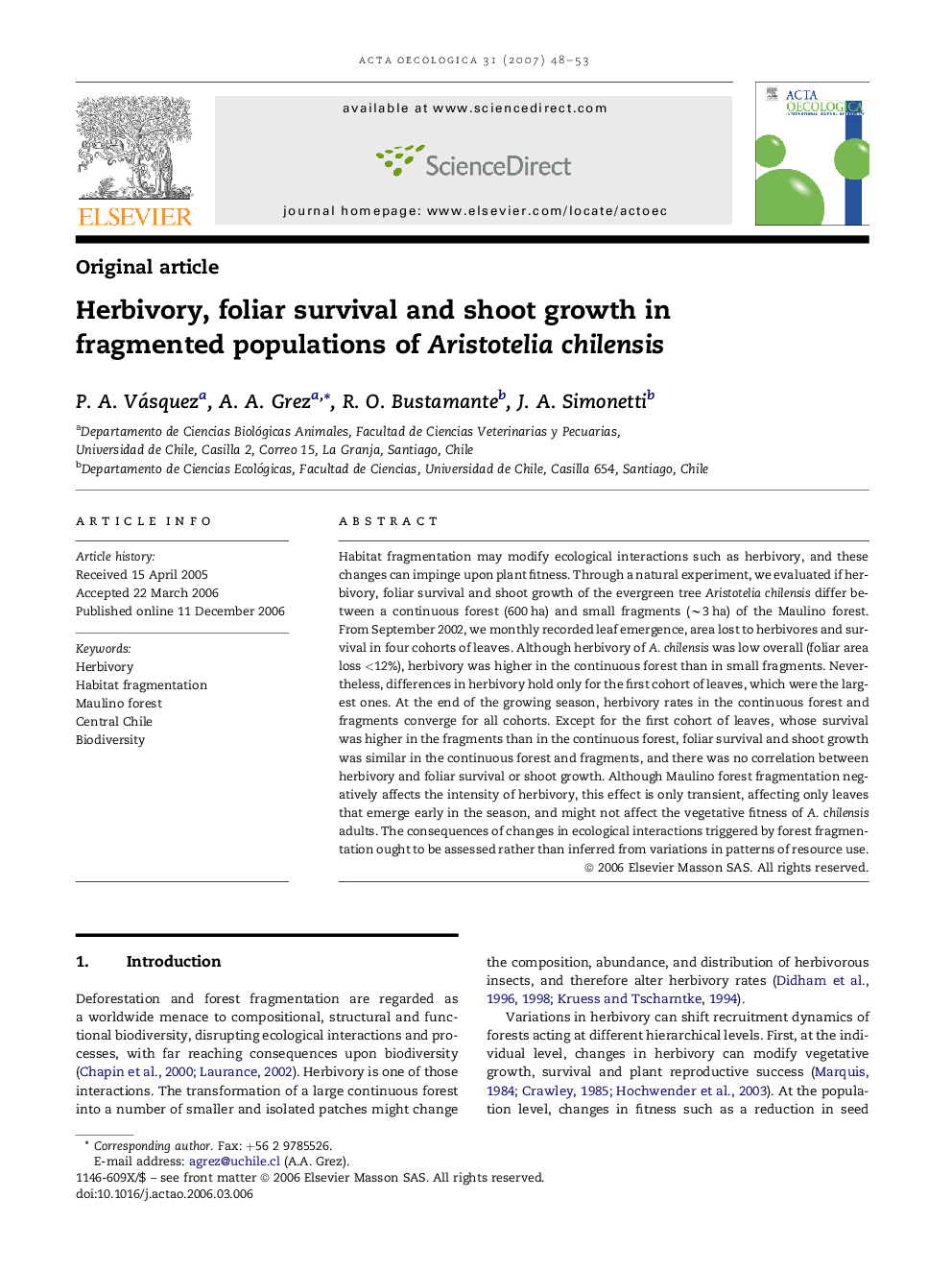| Article ID | Journal | Published Year | Pages | File Type |
|---|---|---|---|---|
| 4381732 | Acta Oecologica | 2007 | 6 Pages |
Habitat fragmentation may modify ecological interactions such as herbivory, and these changes can impinge upon plant fitness. Through a natural experiment, we evaluated if herbivory, foliar survival and shoot growth of the evergreen tree Aristotelia chilensis differ between a continuous forest (600 ha) and small fragments (∼3 ha) of the Maulino forest. From September 2002, we monthly recorded leaf emergence, area lost to herbivores and survival in four cohorts of leaves. Although herbivory of A. chilensis was low overall (foliar area loss <12%), herbivory was higher in the continuous forest than in small fragments. Nevertheless, differences in herbivory hold only for the first cohort of leaves, which were the largest ones. At the end of the growing season, herbivory rates in the continuous forest and fragments converge for all cohorts. Except for the first cohort of leaves, whose survival was higher in the fragments than in the continuous forest, foliar survival and shoot growth was similar in the continuous forest and fragments, and there was no correlation between herbivory and foliar survival or shoot growth. Although Maulino forest fragmentation negatively affects the intensity of herbivory, this effect is only transient, affecting only leaves that emerge early in the season, and might not affect the vegetative fitness of A. chilensis adults. The consequences of changes in ecological interactions triggered by forest fragmentation ought to be assessed rather than inferred from variations in patterns of resource use.
